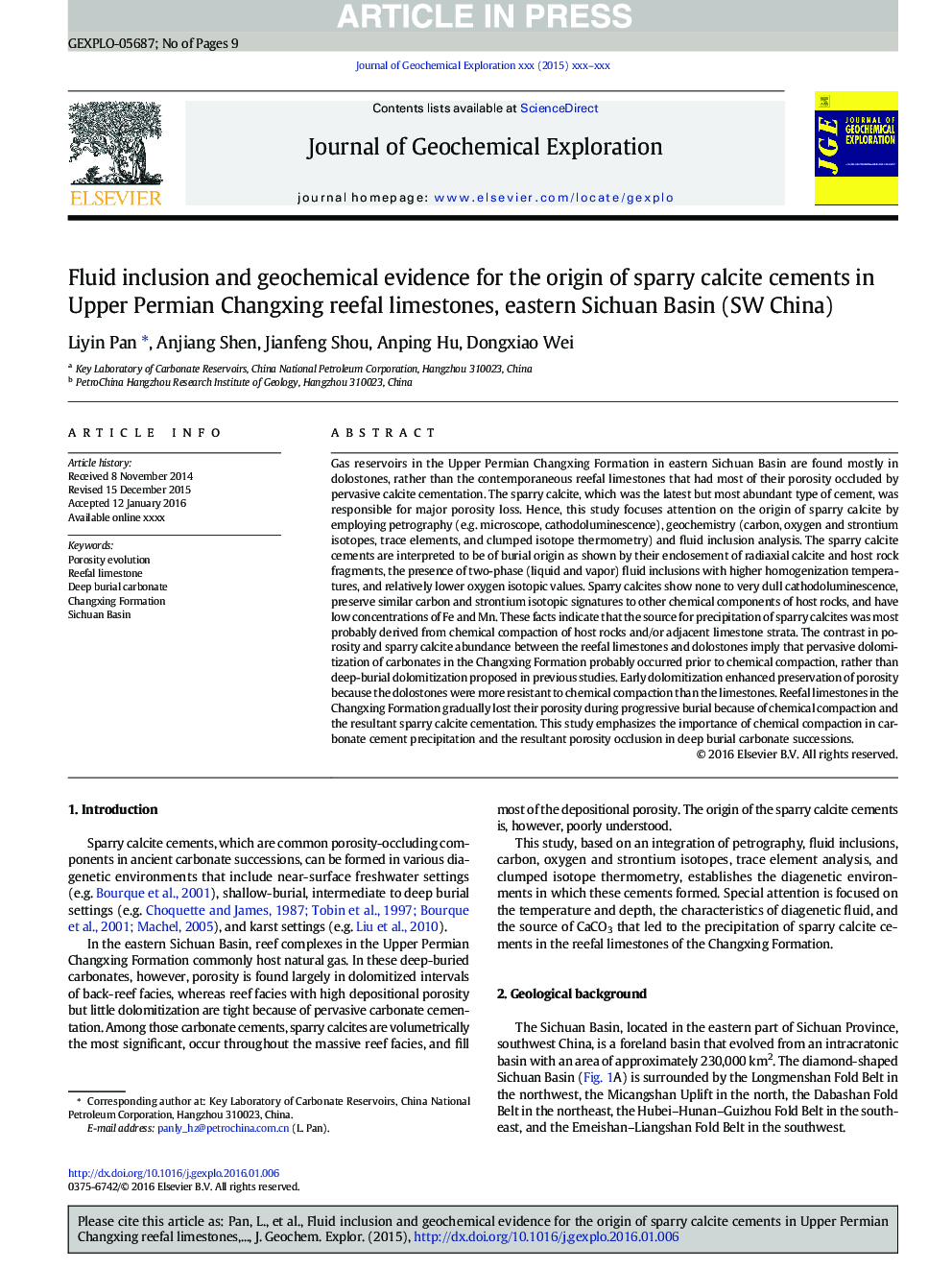| کد مقاله | کد نشریه | سال انتشار | مقاله انگلیسی | نسخه تمام متن |
|---|---|---|---|---|
| 5754478 | 1620888 | 2016 | 9 صفحه PDF | دانلود رایگان |
عنوان انگلیسی مقاله ISI
Fluid inclusion and geochemical evidence for the origin of sparry calcite cements in Upper Permian Changxing reefal limestones, eastern Sichuan Basin (SW China)
دانلود مقاله + سفارش ترجمه
دانلود مقاله ISI انگلیسی
رایگان برای ایرانیان
موضوعات مرتبط
مهندسی و علوم پایه
علوم زمین و سیارات
زمین شناسی اقتصادی
پیش نمایش صفحه اول مقاله

چکیده انگلیسی
Gas reservoirs in the Upper Permian Changxing Formation in eastern Sichuan Basin are found mostly in dolostones, rather than the contemporaneous reefal limestones that had most of their porosity occluded by pervasive calcite cementation. The sparry calcite, which was the latest but most abundant type of cement, was responsible for major porosity loss. Hence, this study focuses attention on the origin of sparry calcite by employing petrography (e.g. microscope, cathodoluminescence), geochemistry (carbon, oxygen and strontium isotopes, trace elements, and clumped isotope thermometry) and fluid inclusion analysis. The sparry calcite cements are interpreted to be of burial origin as shown by their enclosement of radiaxial calcite and host rock fragments, the presence of two-phase (liquid and vapor) fluid inclusions with higher homogenization temperatures, and relatively lower oxygen isotopic values. Sparry calcites show none to very dull cathodoluminescence, preserve similar carbon and strontium isotopic signatures to other chemical components of host rocks, and have low concentrations of Fe and Mn. These facts indicate that the source for precipitation of sparry calcites was most probably derived from chemical compaction of host rocks and/or adjacent limestone strata. The contrast in porosity and sparry calcite abundance between the reefal limestones and dolostones imply that pervasive dolomitization of carbonates in the Changxing Formation probably occurred prior to chemical compaction, rather than deep-burial dolomitization proposed in previous studies. Early dolomitization enhanced preservation of porosity because the dolostones were more resistant to chemical compaction than the limestones. Reefal limestones in the Changxing Formation gradually lost their porosity during progressive burial because of chemical compaction and the resultant sparry calcite cementation. This study emphasizes the importance of chemical compaction in carbonate cement precipitation and the resultant porosity occlusion in deep burial carbonate successions.
ناشر
Database: Elsevier - ScienceDirect (ساینس دایرکت)
Journal: Journal of Geochemical Exploration - Volume 171, December 2016, Pages 124-132
Journal: Journal of Geochemical Exploration - Volume 171, December 2016, Pages 124-132
نویسندگان
Liyin Pan, Anjiang Shen, Jianfeng Shou, Anping Hu, Dongxiao Wei,